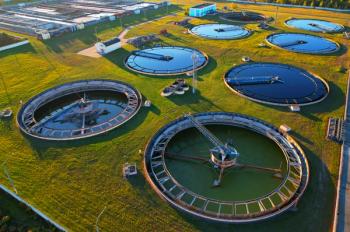
Rapid Glucosinolate Analysis Using Direct-Infusion Mass Spectrometry
A rapid, accurate, and quantitative method for the analysis of glucosinolates (GSLs) has been achieved through the combining of column-free liquid chromatography (LC) with direct-infusion mass spectrometry (DIMS).
Researchers from the Graduate School of Agriculture at Kyoto University (Japan) have developed a rapid, accurate, and quantitative method for the analysis of glucosinolates (GSLs) through the combining of column-free liquid chromatography (LC) with direct-infusion mass spectrometry (DIMS). While previous methods for analyzing GSLs take 20–50 min per sample, this method, outlined in a recent paper published by Mass Spectrometry (Tokyo) (1), is reported to have achieved a shortened analysis time of 30 sec per sample using a direct-infusion method, with no decrease in the detected intensity of GSL ions.
Sulfur-containing secondary metabolites found in cruciferous plants (2,3), approximately 200 types of GSLs are known to exist. GSLs are classified into three types (aliphatic, aromatic, and indole) based on differences in the side chains derived from amino acids (4).The authors state that the analysis of GSLs is typically performed using a device that combines liquid chromatography (LC) with a photodiode array (PDA) or a mass spectrometer (MS). However, in many cases, it is necessary to analyze multiple GSLs simultaneously, and the time required for these LC separations is a bottleneck. Conventional LC often takes a long time to separate multiple compounds, inspiring the author’s efforts to quantify multiple GSLs in a short time by introducing samples directly into a high-resolution MS without using LC.
Working with extracts of turnip hypocotyls (the part of the axis of a plant embryo or seedling below itsfirst leaf or one of the first pair of leaves, also known as the cotyledon [5,6]), the authors found that the time required for analysis by this method was 30 sec, which was significantly faster than the 25–45 min required by conventional methods. In their analysis of GSLs in turnip hypocotyls, the authors were able to detect and identify 11 previously reported GSLs through highly accurate and high-resolution analysis, as well as obtain quantitative values close to those obtained by conventional methods for the three GSLs mainly found in turnip hypocotyls. In 100 consecutive analyses of GSLs contained in turnip seedlings, small fluctuations in the measured values were observed as the number of analyses increased, indicating that continuous analysis of multiple samples is possible.
While this study focused on GSLs in extracts of turnip hypocotyls, the authors said that the rapid analytical method they developed can be applied to other compounds. By selecting the solid phase extraction (SPE) column, solvent, and ionization method, it is expected that a wide range of compound groups can be similarly analyzed in 30 sec. Because nano-LC allows the separation of compounds using a column, the authors state that the possibility exists to separate and quantify compounds which could not be separated in this study using the same molecular formula; therefore, further innovations in nano-LC technology for rapid analysis are necessary. In addition, as their laboratory did not have an automated SPE instrument, they said that further studies would be needed to assess whether the use of an automated SPE instrument reduces the time and effort required to analyze multiple samples. Along the same lines, robotics may be utilized to automate the extraction step; therefore, the possibility exists that robotics combined with automated SPE and DIMS may be able to analyze multiple samples in a shorter time. The authors conclude that their method, combined with SPE and DIMS, will be useful for cohort studies, compound screening, and cultivar breeding, which require analysis of multiple samples.
References
1. Tanewata M.; Oikawa A. Rapid Analysis of Glucosinolates Using Direct-Infusion Mass Spectrometry. Mass Spectrom. (Tokyo) 2024, 13 (1), A0150. DOI:
2. Barba, F. J.; N. Nikmaram, N.; S. Roohinejad, S.; A. Khelfa, A.; Z. Zhu, Z.; M. Koubaa, M. Bioavailability of Glucosinolates and their Breakdown Products: Impact of Processing. Front. Nutr. 2016, 3, 24. DOI:
3. Liu, Z.; Wang, H.; Lv, J.; Luo, S.; Hu, L.; Wang, J.; Li, L.; Zhang, G.; Xie, J.; Yu, J. Effects of Plant Hormones, Metal Ions, Salinity, Sugar, and Chemicals Pollution on Glucosinolate Biosynthesis in Cruciferous Plant. Front. Plant Sci. 2022, 13, 856442. DOI:
4. Ishida, M.; Hara, M.; Fukino, N.; Kakizaki, T.; Morimitsu, Y. Glucosinolate Metabolism, Functionality and Breeding for the Improvement of Brassicaceae Vegetables. Breed. Sci. 2014, 64, 48-59. DOI:
5. Hypocotyl definition. Merriam-Webster website. (accessed 2024-08-07)
6. Cotyledon definition. Merriam-Webster website. (accessed 2027-08-07)
Newsletter
Join the global community of analytical scientists who trust LCGC for insights on the latest techniques, trends, and expert solutions in chromatography.





